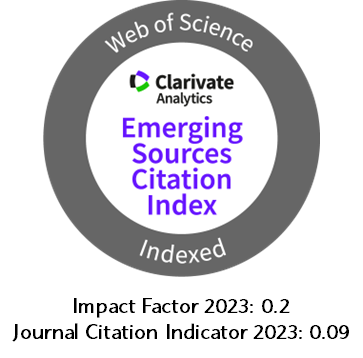Theoretical study of physisorption of tosylate on AU10, AU15 and AU18 surfaces utilizing DFT approach
DOI:
https://doi.org/10.5377/nexo.v36i06.17453Keywords:
Physisorption, DFT, DOS, Symmetry, Polarizability, Electrostatic Potential, Energy gapAbstract
Charge transfer from organic nanomaterial to the coinage metal surfaces occur as a result to the physisorption physisorption phenomena. Physisorption plays a major role in many applications. A set of properties such as, molecular geometries, contour density maps, electrostatic potentials (ESPs), infrared spectra (IR), electronic states, HOMO and LUMO energies, Energy gaps (Eg), ionization potential (I.P), electron affinity (E.A),dipole moment, polarizabilities , average polarizability , symmetry and density of states by using Gaussian 09 software package algorithms were investigated at LANL2DZ, B3LYP and the ground state energy of (Au10-OTS) , (Au15) , (Au15-OTS), (Au18) and (Au18-OTS) , but the structure of (Au10) has been submitted at LANL2MB,B3LYP basis sets. The research study physisorption phenomena from the organic nanomaterial to sylate (OTS) to the coinage metal surface (gold surfaces), also the research concentrate if charge transfer procedure gets at the surface. Physisorption phenomena and charge transfer procedure that happen at the surface can be known throughout some properties such as the closed energy contour maps, electrostatic potentials, symmetry and density of states. Electronic states and energy gap property have been studied in this research to recognize importance of the geometrical structures in the electronic devices and the different electronic applications in different branch of knowledges. The research had the ionization potential and electron affinity credits to demonstrate if the geometrical structure will behave as a donor or an acceptor because the ionization energy demonstrate ability of the geometrical structure to donate the electrons in an interaction, but the electron affinity describes the capacity of the geometrical structure to accept electrons in an interaction.
Downloads
283
Downloads
Published
How to Cite
Issue
Section
License

This work is licensed under a Creative Commons Attribution-NonCommercial-NoDerivatives 4.0 International License.
The authors who publish in Nexo Scientific Journal agree to the following terms:
- Authors retain the copyright and grant the journal the right of the first publication under the license Creative Commons Attribution License, which allows others to share the work with a recognition of the authorship of the work and the initial publication in Nexo Scientific Journal.
- Authors may separately establish additional agreements for the non-exclusive distribution of the version of the work published in the journal (for example, in an institutional repository or a book), with the recognition of the initial publication in Nexo Scientific Journal.
- Authors are allowed and encouraged to disseminate their works electronically (for example, in institutional repositories or in their own website) before and during the submission process, as it can lead to productive exchanges, as well as earlier and greater citation of published works.











